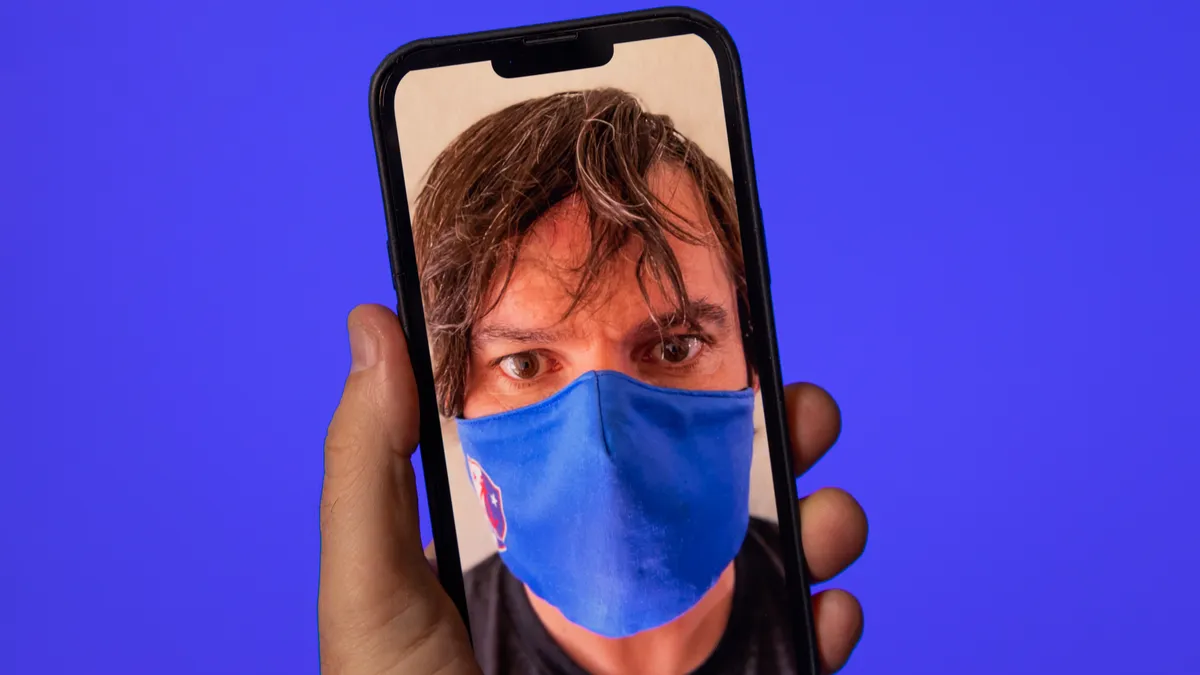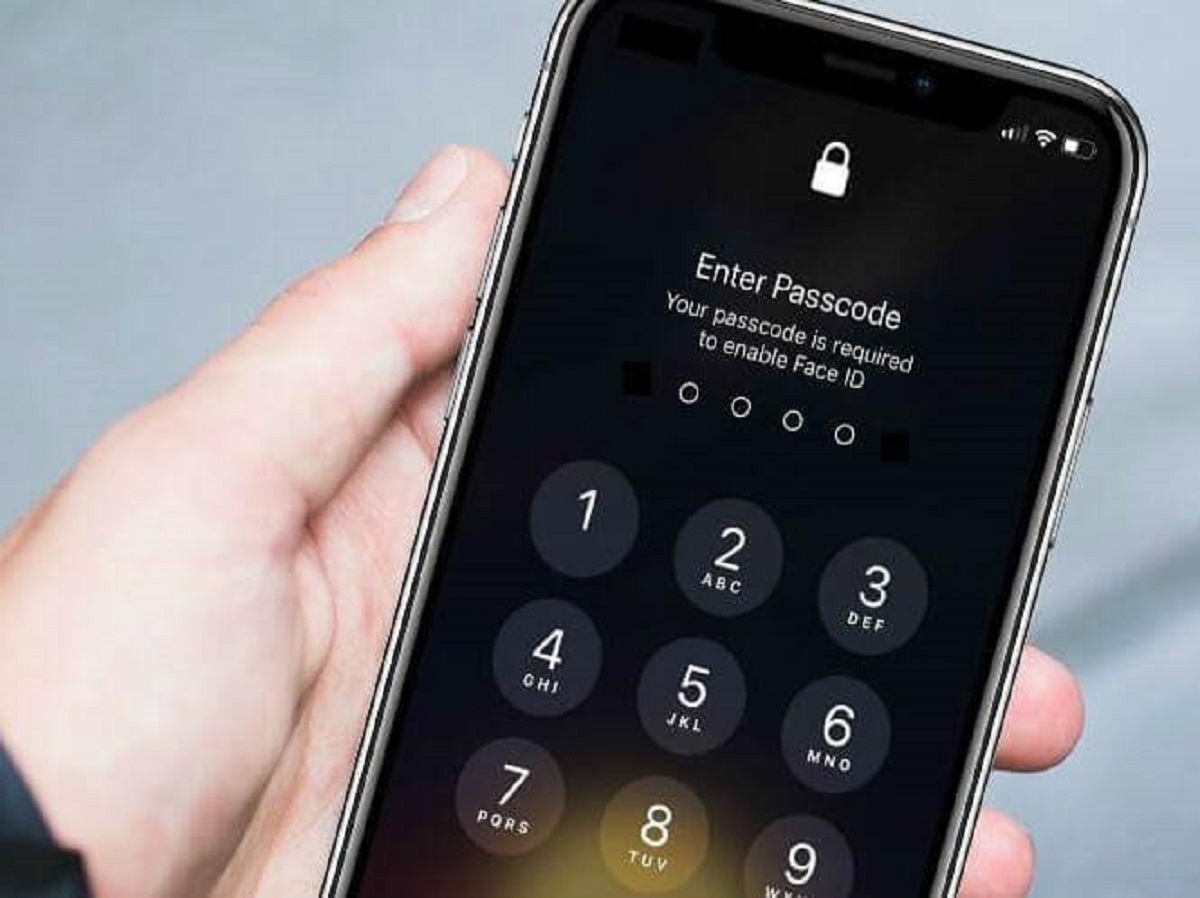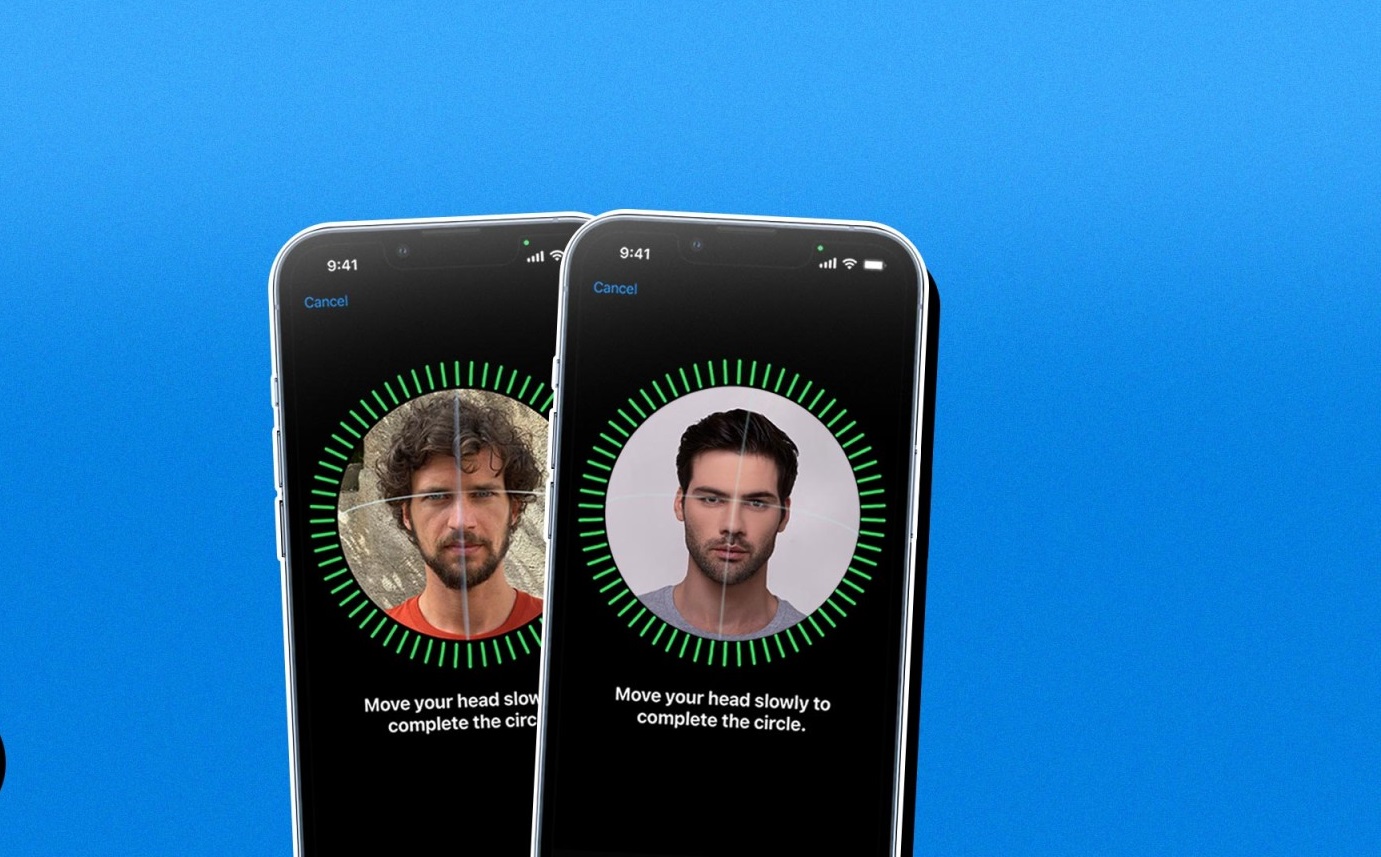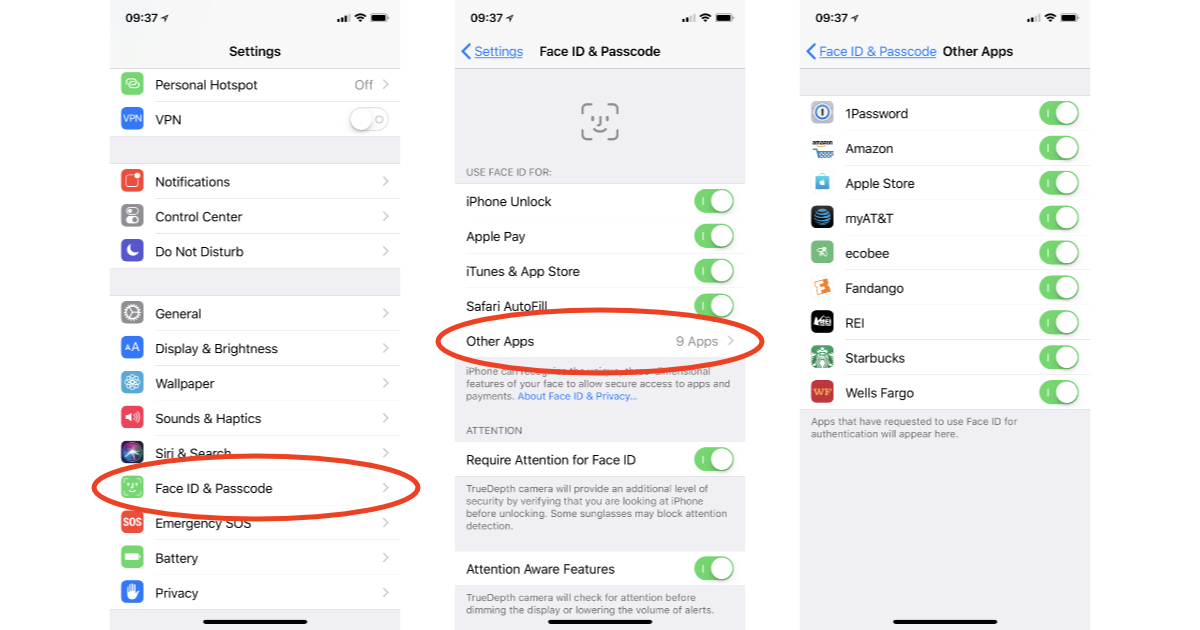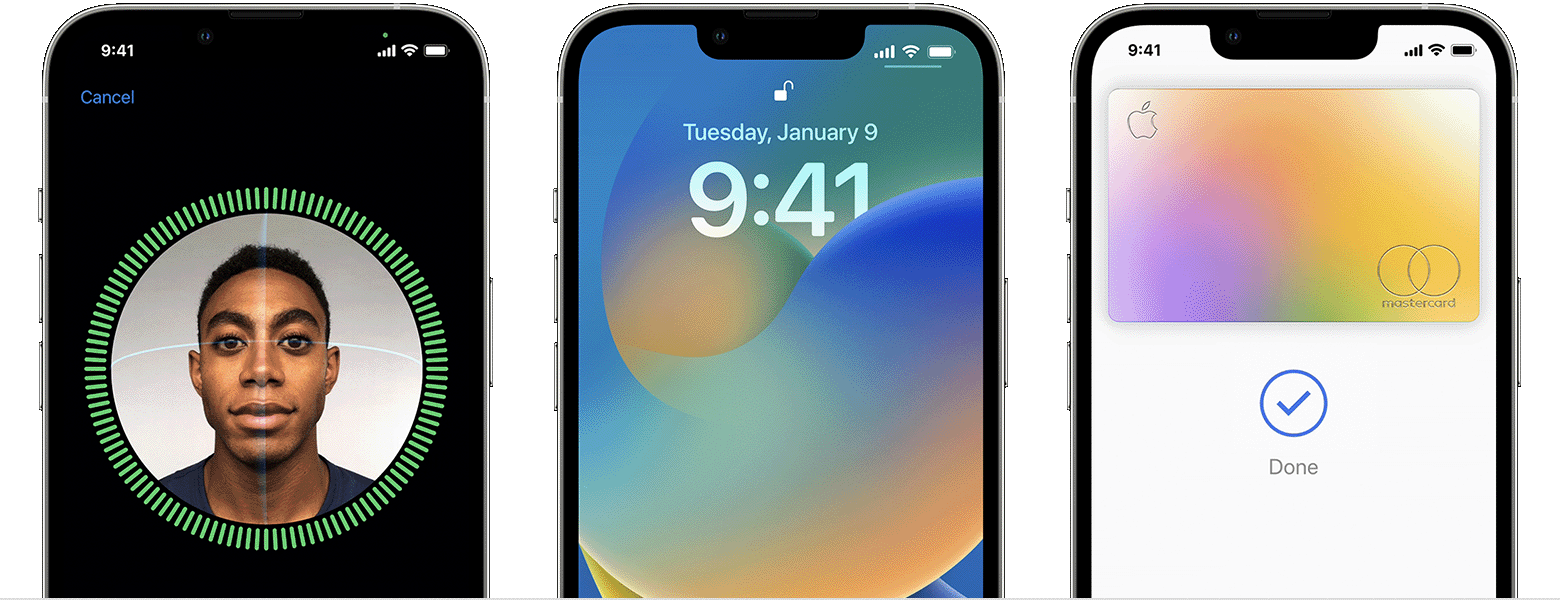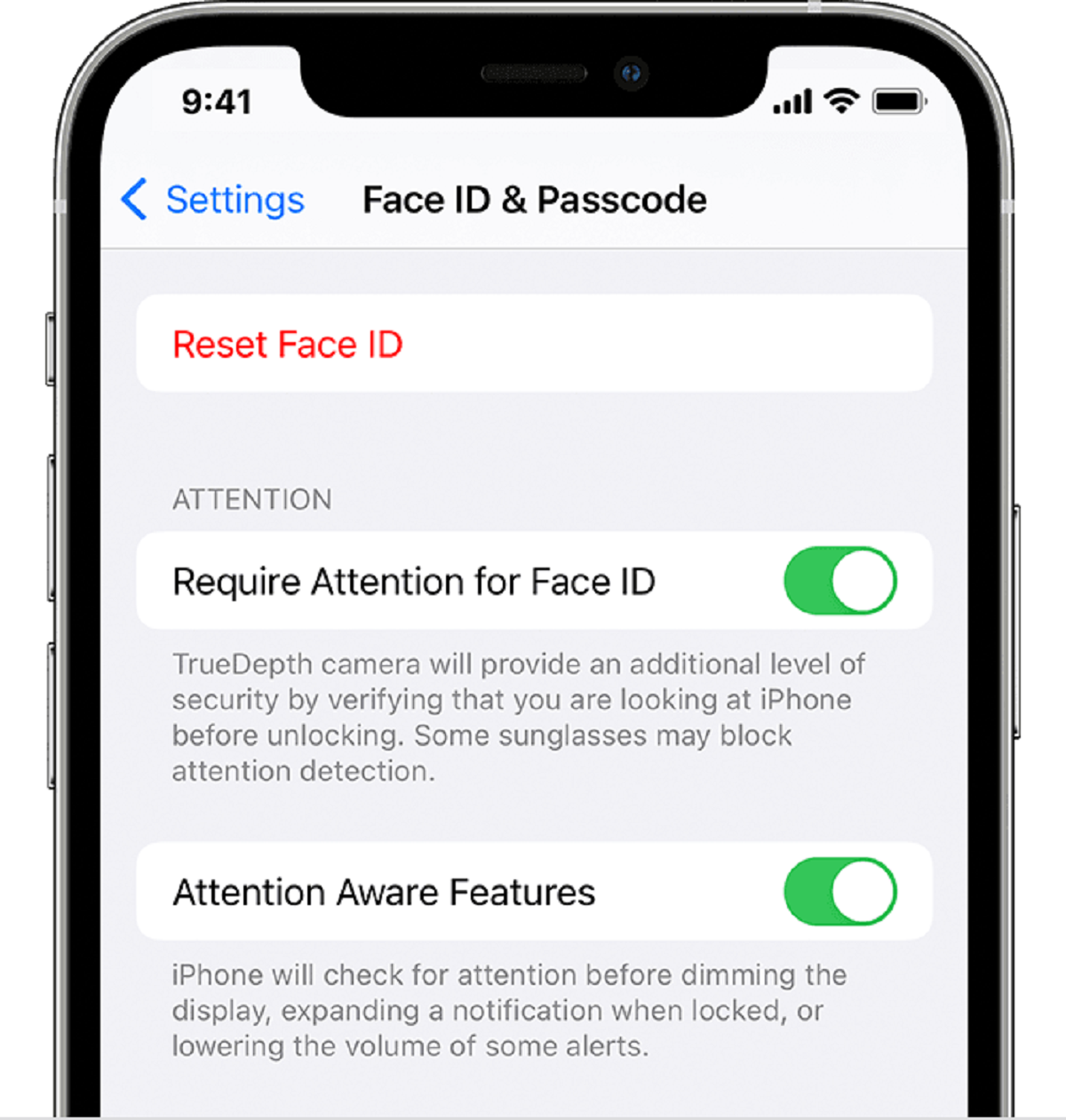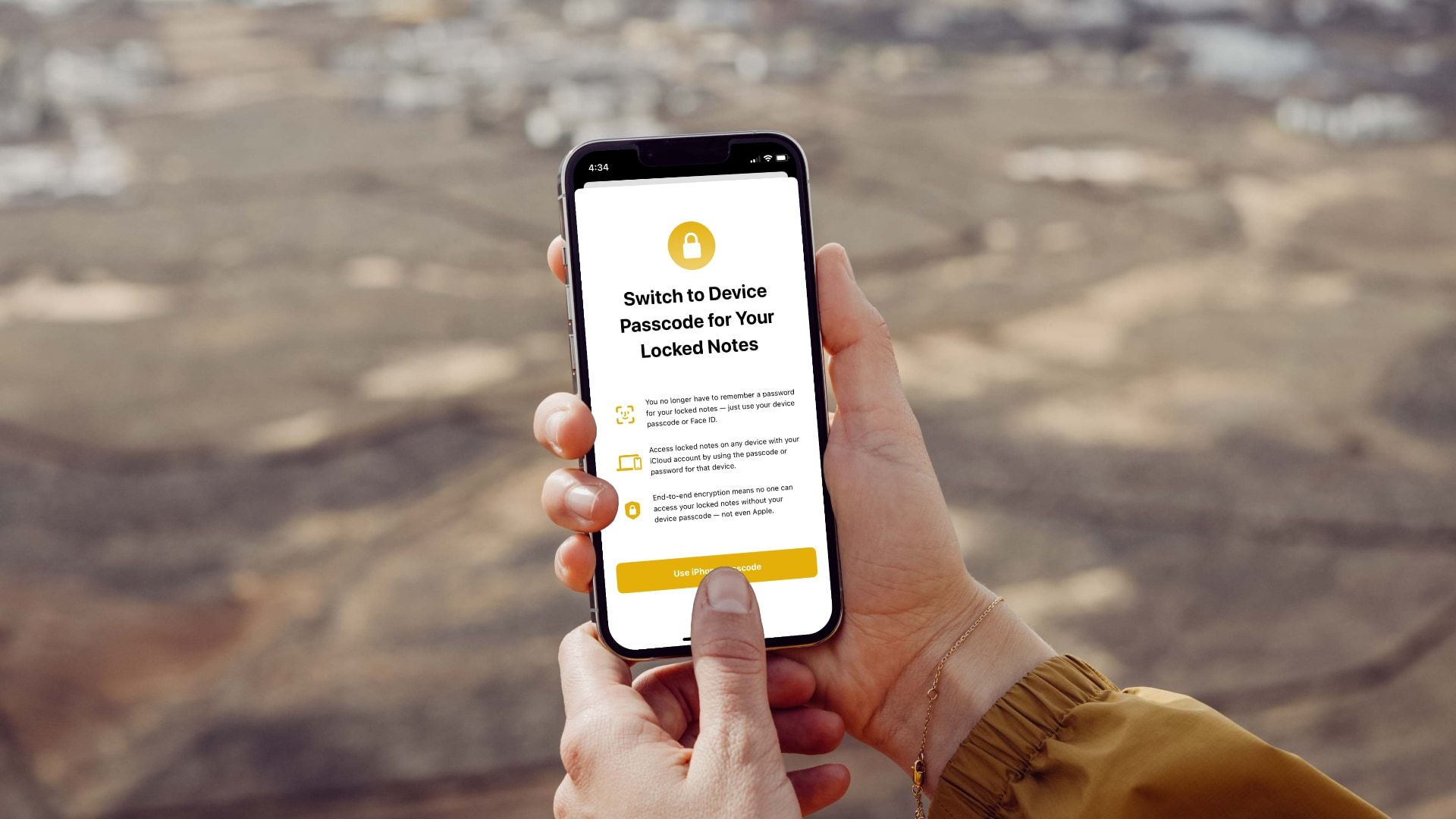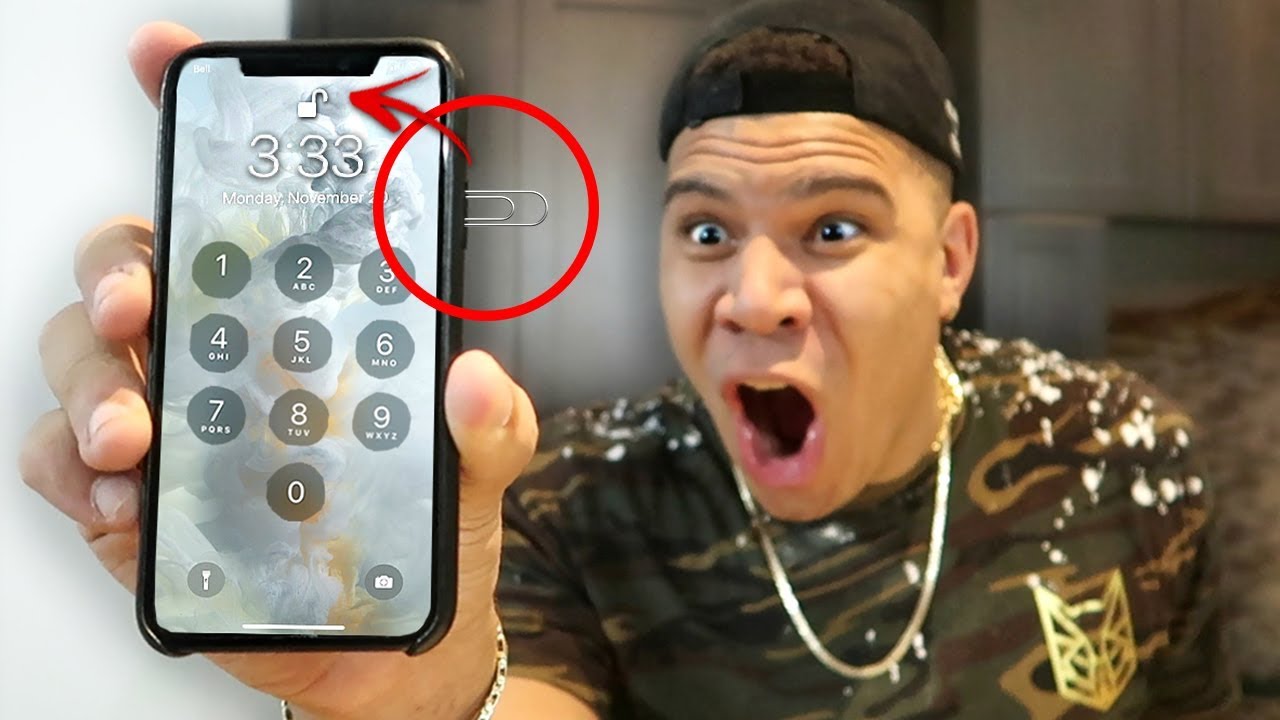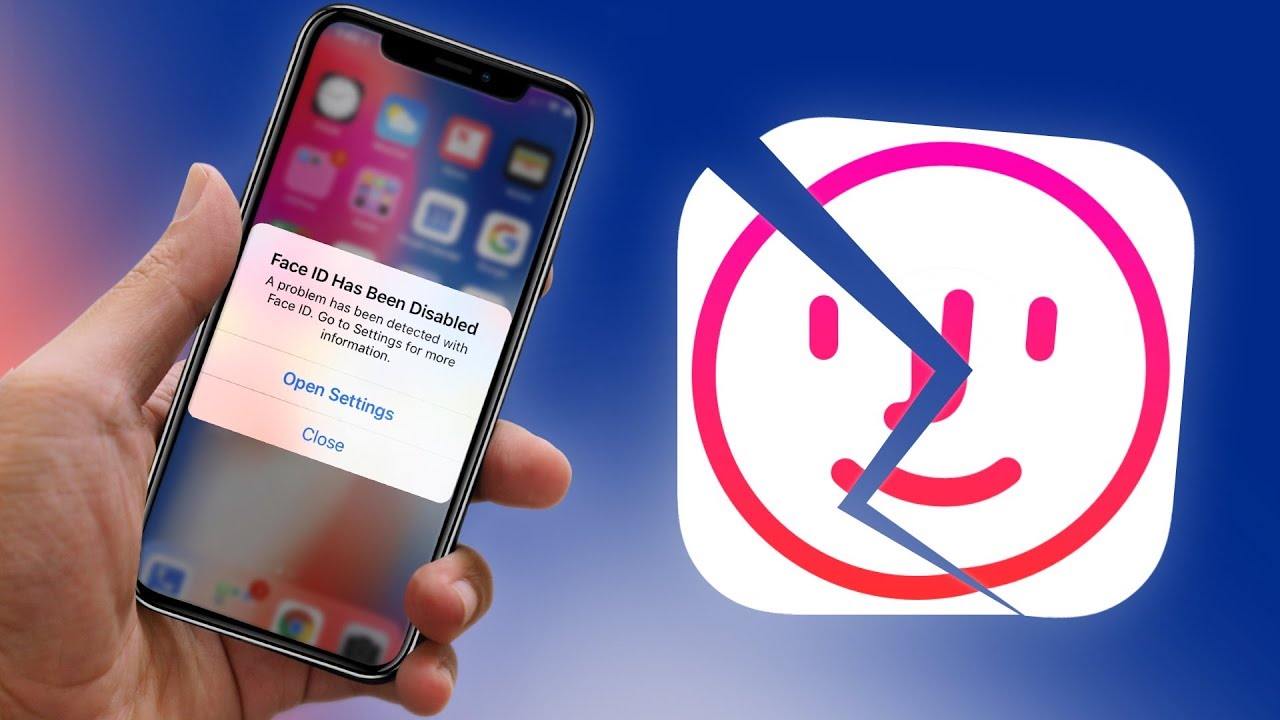Introduction
With the rapid advancement of technology, the way we access and secure our smartphones has undergone a significant transformation. One of the most innovative developments in this area is Face ID, a facial recognition feature introduced by Apple. Face ID allows users to unlock their phones and authenticate various functions simply by scanning their faces.
In this article, we will discuss the intricacies of Face ID and explore the question of whether it is possible to unlock someone’s phone using this technology. We will delve into the legal implications and ethical considerations surrounding such actions. Furthermore, we will provide steps and precautions to keep in mind if ever faced with a situation where unlocking someone’s phone with Face ID becomes necessary.
Face ID has revolutionized biometric authentication on smartphones. By utilizing advanced depth-sensing technologies and artificial intelligence algorithms, this feature creates a detailed 3D map of the user’s face, allowing for a secure and seamless user experience. Instead of relying on a passcode or fingerprint, Face ID leverages the unique facial features of individuals to grant access to their devices.
Given the sophistication and accuracy of Face ID, it is crucial to address the potential for misuse or unauthorized access. Can someone unlock another person’s phone by using their own face? This question has raised concerns about privacy and security, prompting debates on the legal and ethical aspects of accessing someone’s private information.
The legal implications of unlocking someone’s phone with Face ID can vary depending on jurisdiction. It is essential to understand the laws and regulations of your specific region to ensure compliance. Accessing someone’s device without their permission, even with their face, may violate privacy laws and result in legal consequences.
However, it is equally important to consider the ethical implications of unlocking someone’s phone with Face ID. Respect for privacy, consent, and personal boundaries should always guide our actions. Intruding into someone’s personal information without a valid reason or their consent not only violates their privacy but also erodes trust and can strain relationships.
In the following sections, we will explore the steps involved in unlocking someone’s phone with Face ID and discuss the precautions to take to ensure that the process is carried out legally and ethically. Understanding the nuances of this technology and the associated responsibilities is essential to navigate the realm of biometric authentication with integrity.
What is Face ID?
Face ID is a biometric security feature introduced by Apple that uses facial recognition technology to unlock iPhones and authenticate various functions. It replaces the traditional passcode or fingerprint method, offering a more convenient and secure way to access your device.
Unlike previous facial recognition technologies, Face ID utilizes advanced sensors and algorithms to create a detailed 3D map of the user’s face. It captures the unique facial features, depth, and contours to ensure accurate and reliable identification.
To set up Face ID, users position their face within the designated frame on the screen and move their head in a circular motion. This allows the iPhone to capture multiple angles of their face, creating a comprehensive facial map for identification purposes.
Face ID offers several advantages over traditional authentication methods. Firstly, it is effortless and convenient. Users can simply look at their iPhone, and if the device recognizes their face, it will unlock instantaneously. This eliminates the need for typing in a passcode or placing their finger on a fingerprint sensor.
Secondly, Face ID is highly secure. The detailed mathematical representation of the user’s face is saved securely on the device’s Secure Enclave, a dedicated hardware component that stores sensitive information. This ensures that the facial data remains private and protected against unauthorized access.
Additionally, Face ID adapts and evolves over time. As users continue to use their iPhones, the facial recognition system learns and improves its accuracy. It can adapt to changes in appearance, such as growing a beard, wearing glasses, or even aging. This makes Face ID versatile and reliable in different conditions and situations.
Moreover, Face ID not only unlocks the device but also enables seamless authentication for various tasks and apps. Users can authorize app installations, access secure content, make payments, and authenticate password autofill using Face ID. This integration enhances the user experience and simplifies the process of securely accessing personal information.
It is important to note that Face ID is not foolproof, and there are certain limitations to its functionality. For example, it may not work if the user is wearing a face mask or if the lighting conditions are unfavorable. However, in normal everyday usage, Face ID provides a highly secure and efficient method of unlocking iPhones and authenticating various functions.
How does Face ID work?
Face ID utilizes a combination of hardware and software technologies to securely recognize and authenticate a user’s face. It employs a complex process that involves depth-sensing cameras, machine learning, and advanced algorithms to provide accurate and reliable facial recognition.
The primary component of Face ID is the TrueDepth camera system, located in the front notch of iPhones equipped with this feature. The TrueDepth system consists of multiple sensors, including an infrared camera, flood illuminator, dot projector, proximity sensor, ambient light sensor, and the front-facing camera.
When a user attempts to unlock their iPhone using Face ID, the flood illuminator emits infrared light to illuminate the face, even in low-light conditions. The dot projector then projects a pattern of more than 30,000 invisible infrared dots onto the face, creating a detailed and accurate depth map of the facial contours.
The infrared camera captures the dot pattern and the depth information, creating a precise 3D representation of the user’s face. This depth map, combined with the 2D infrared image of the face, is processed by the neural engine, a specialized hardware component in the iPhone’s A-series chip designed for machine learning tasks.
The neural engine uses sophisticated algorithms to compare the captured facial data with the stored mathematical representation of the enrolled face. This enrolled face data is securely stored on the device’s Secure Enclave, ensuring privacy and protection against unauthorized access.
The comparison process involves evaluating various aspects of the face, such as the underlying structure, contours, and unique features. It also takes into account factors like pose, expression, and even changes in appearance due to facial hair or accessories.
Based on the comparison results, the neural engine generates a mathematical score that represents the match between the captured face and the enrolled face data. If the score exceeds a predefined threshold, the iPhone is unlocked, granting access to the user. If not, the device remains locked, requiring an alternate authentication method, such as a passcode.
It is important to note that the facial recognition process is performed entirely on the device, without the need for any data to be sent to external servers. This ensures that the facial data remains private and secure, reducing the risk of unauthorized access or data breaches.
Overall, Face ID combines the power of hardware components, like the TrueDepth camera system, with advanced software algorithms to provide a robust and secure facial recognition system. It is designed to continuously adapt and improve, offering a seamless and reliable user experience for unlocking iPhones and authenticating various functions.
Is it possible to unlock someone’s phone with Face ID?
Face ID is designed to be highly secure and reliable, but the question remains: is it possible for someone to unlock another person’s phone using Face ID? The answer is both yes and no, depending on the circumstances.
In typical situations, where the device owner has set up Face ID and is the only enrolled face, it is highly unlikely for someone else to unlock the phone using their own face. Face ID incorporates advanced depth-sensing technologies and machine learning algorithms to create a detailed and unique 3D map of the enrolled user’s face. This level of precision makes it difficult for someone else to replicate and match the facial features accurately.
However, in some exceptional cases, it may be possible for someone with a close physical resemblance or a nearly identical twin to unlock the phone using their face. This occurs because Face ID relies on the similarities and differences in facial features to differentiate between individuals.
It is also worth noting that Face ID requires the user’s attention for authentication. The user must be actively looking at the phone, and attentiveness is detected by the infrared camera. This feature is designed to prevent unauthorized unlocking when the user is unaware or asleep. Therefore, if someone attempts to unlock another person’s phone without their knowledge or consent, it is less likely to succeed.
Moreover, Apple implements strict security measures to protect against unauthorized access or impersonation. The Face ID technology continually evolves to adapt to potential security vulnerabilities and ensure a high level of protection for user data.
Despite the robustness of Face ID, it is crucial for users to exercise caution and take necessary precautions to enhance security. For instance, it is recommended to have a strong alphanumeric passcode set up as a backup authentication method in case Face ID fails or is compromised.
Additionally, if there are concerns about unauthorized access to personal data, users can enable the option to require attention for Face ID authentication. By enabling this setting, Face ID will only unlock the phone when the user’s eyes are open and looking at the screen, making it more challenging for someone to unlock the device without their consent.
Overall, while it is theoretically possible for someone with a strong physical resemblance to unlock another person’s phone using Face ID, the likelihood is low in most practical scenarios. The sophisticated technology and security measures implemented by Apple make it highly difficult for unauthorized access. However, it is always important to remain vigilant, exercise caution, and take necessary precautions to protect personal data and privacy.
Legal implications of unlocking someone’s phone with Face ID
The act of unlocking someone’s phone with Face ID without their consent raises significant legal implications. The specific legal consequences can vary depending on jurisdiction and the circumstances surrounding the unauthorized access. It is important to understand the potential legal ramifications before engaging in such activities.
In many regions, unauthorized access to someone’s digital devices, including smartphones, is considered a violation of privacy laws. These laws aim to protect individuals from unwarranted intrusion into their private affairs. By using someone’s own face to unlock their phone, even with Face ID, one may be infringing upon their privacy rights.
In some jurisdictions, unauthorized access to another person’s device may be categorized as unauthorized access to a computer system or a violation of computer crime laws. Such offenses can carry severe penalties, including fines and imprisonment. Therefore, attempting to unlock someone’s phone without their permission can potentially result in legal consequences.
Additio
Ethical considerations of unlocking someone’s phone with Face ID
Unlocking someone’s phone with Face ID without their consent raises crucial ethical considerations. Respecting privacy, consent, and personal boundaries is fundamental in ethical decision-making. Engaging in activities that invade someone’s privacy, even with advanced biometric technology like Face ID, can lead to ethical dilemmas and potential harm to relationships.
One of the key ethical principles involved is the principle of autonomy. Each individual has the right to control and determine who has access to their personal information, including the contents of their smartphone. By unlocking someone’s phone without their consent, we infringe upon their autonomy and disregard their right to privacy.
Furthermore, unauthorized access to someone’s phone can breach the trust that exists in interpersonal relationships. Trust is essential for maintaining healthy and respectful connections with others. By invading someone’s privacy and breaching their trust, we risk damaging the foundation of the relationship.
Respecting consent is another important ethical consideration. Consent serves as the cornerstone for any interaction that involves personal information. It is necessary to obtain someone’s explicit permission before accessing their private data. By unlocking someone’s phone without their consent, we violate their right to give or withhold permission, and greatly undermine the ethical principles of consent and respect for boundaries.
An additional ethical concern is the potential misuse or abuse of personal information obtained by unlocking someone’s phone. Access to someone’s device can reveal sensitive and private data, such as personal messages, photos, and financial information. Using this information for personal gain, blackmail, or any other malicious intent is highly unethical and can cause significant harm to individuals.
It is important to consider the potential consequences of our actions. Even if our intentions may seem harmless or justified in the moment, it is crucial to recognize the potential harm and unintended consequences that can arise from unlocking someone’s phone without their consent. Protecting individuals’ privacy and respecting their autonomy should always be at the forefront of our ethical decision-making process.
Ultimately, in ethical decision-making, it is essential to prioritize respect for privacy, consent, and personal boundaries. Engaging in activities that violate these principles, such as unlocking someone’s phone with Face ID without their consent, compromises trust, autonomy, and the fundamental principles of respect for others.
Steps to unlock someone’s phone with Face ID
Unlocking someone’s phone with Face ID without their consent is not recommended due to privacy and ethical considerations. However, it’s important to understand the steps involved in the process for informational purposes. Here is a general outline of the steps that would be involved in attempting to unlock someone’s phone using Face ID:
- Ensure that the person whose phone you want to unlock is not present or aware of your actions. Attempting to unlock someone’s phone without their knowledge or permission is a violation of their privacy and autonomy.
- If the phone has an active screen, raise it to wake it up or tap on it to activate the lock screen.
- Place the phone in a position that allows the front-facing camera and TrueDepth sensors to clearly capture your facial features.
- Position your face within the designated frame on the lock screen. The phone should detect your presence and attempt to authenticate based on Face ID.
- Ensure that your face is well-illuminated and clearly visible to the front-facing camera. Face ID relies on accurate facial recognition, so favorable lighting conditions are essential.
- Wait for the device to analyze and compare the captured facial data with the enrolled face data stored on the device. If the match is successful, the phone will unlock and grant access to the user’s data and functions.
- If the device does not unlock, repeat the process, ensuring that your face is properly positioned and well-illuminated.
It is important to note that attempting to unlock someone’s phone using Face ID without their consent is not only ethically questionable but may also carry legal consequences. Respect for privacy, consent, and personal boundaries should always guide our actions when considering accessing someone else’s personal devices.
Precautions to take when unlocking someone’s phone with Face ID
Unlocking someone’s phone with Face ID without their consent is a delicate matter that should be approached with caution, if at all. However, if you find yourself in a situation where unlocking someone’s phone with Face ID becomes necessary, here are some precautions to consider:
- Ensure a legitimate reason: Make sure you have a valid and lawful reason for accessing someone’s phone. Respect the person’s privacy and only proceed if you have their explicit consent or if there are legal justifications for doing so.
- Communicate openly: If you feel the need to access someone’s phone, have an open and honest conversation with them. Discuss why you need to unlock their device and try to obtain their consent. Transparency and communication are key to maintaining trust in relationships.
- Privacy settings: Familiarize yourself with the privacy settings on the device. Ensure that sensitive or personal information is appropriately protected and encrypted. Respect the person’s privacy by not accessing or sharing any information that is beyond the scope of your legitimate need.
- Guard against misuse: Take precautions to prevent misuse or unauthorized access to any data you encounter on the device. Avoid sharing or using the information for unauthorized purposes, and handle it in a responsible and lawful manner.
- Record your actions: If there is a valid reason for accessing someone’s phone without their consent, consider documenting your actions. This can help establish a clear record of your intent and the steps you took, should any questions or concerns arise later.
- Follow local laws: Familiarize yourself with the laws and regulations of your jurisdiction regarding privacy and data protection. Ensure that your actions comply with these laws to avoid any legal consequences.
- Seek professional help if needed: In cases where you believe there may be legal or ethical ambiguities, it is advisable to seek professional advice. Consult an attorney or relevant experts who can provide guidance on navigating the situation within the confines of the law.
It is essential to approach the act of unlocking someone’s phone with Face ID with utmost respect for privacy, consent, and ethical considerations. Whenever possible, obtain explicit permission from the device owner to avoid any potential ethical or legal dilemmas.
Conclusion
Face ID has brought significant advancements in biometric authentication, offering a convenient and secure way to unlock smartphones and authenticate various functions. However, unlocking someone’s phone with Face ID without their knowledge or consent raises important legal and ethical considerations.
Respecting privacy, autonomy, and consent are essential ethical principles that should guide our actions. Unauthorized access to someone’s phone not only violates their privacy rights but also erodes trust and can strain relationships. It is crucial to engage in responsible and lawful behavior when dealing with personal devices, even with advanced biometric technologies like Face ID.
While Face ID provides a high level of security and accuracy, it is not foolproof, and there are potential vulnerabilities. Physical similarities, such as those shared by close relatives or identical twins, can potentially allow unauthorized access. However, in most practical scenarios, unlocking someone’s phone using Face ID without their consent is unlikely to succeed.
It is important to note that the legal implications of unlocking someone’s phone with Face ID can vary depending on jurisdiction. Unauthorized access to another person’s device can be considered a violation of privacy laws and may carry severe penalties. Understanding local laws and regulations is essential to ensure compliance and avoid potential legal consequences.
In conclusion, while Face ID offers convenience and security, it is crucial to approach the use of this technology responsibly and within ethical boundaries. Respecting privacy, obtaining consent, and considering the potential legal and ethical ramifications should guide our actions when it comes to accessing someone’s personal devices with Face ID. Ultimately, it is essential to maintain the trust and integrity of our relationships by upholding principles of privacy, consent, and respect in the realm of biometric authentication.







